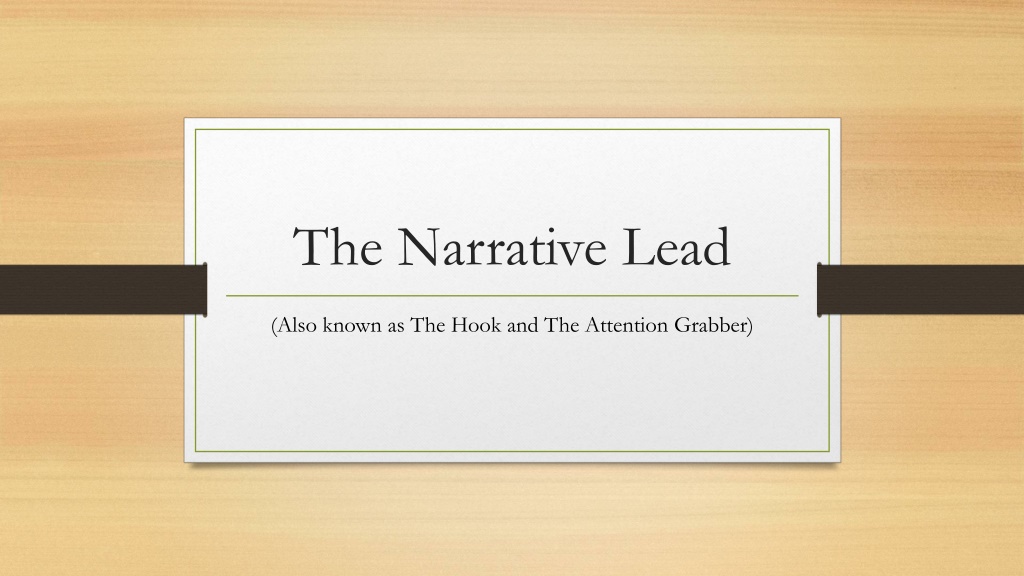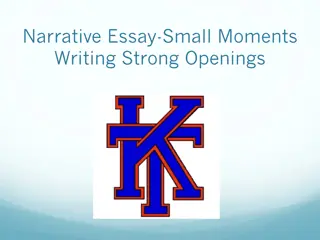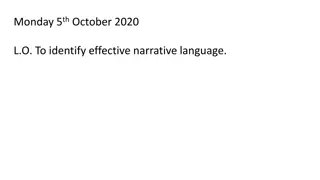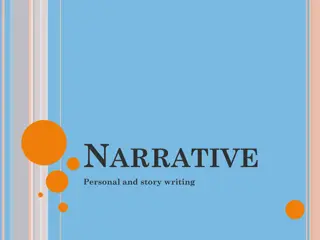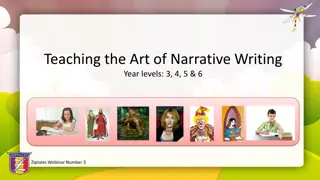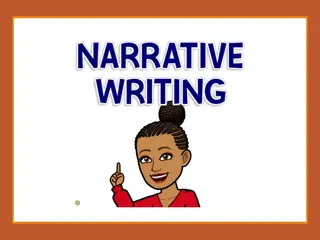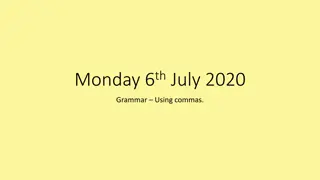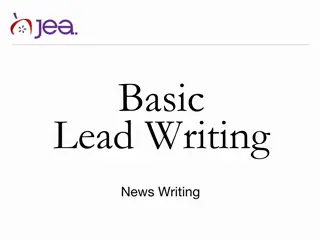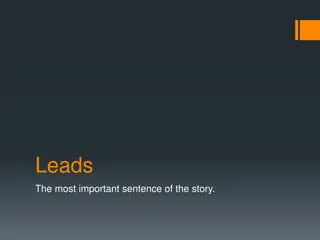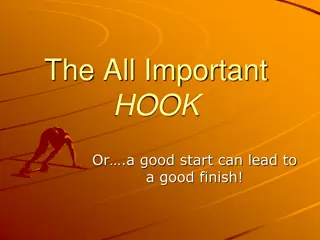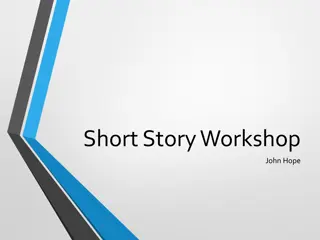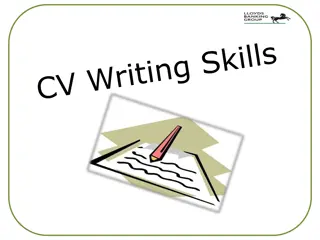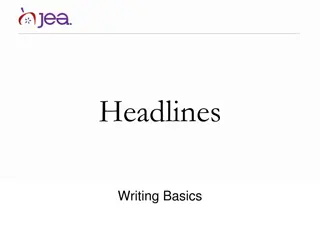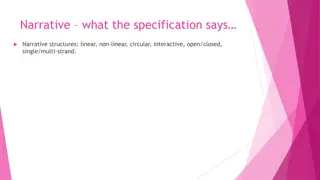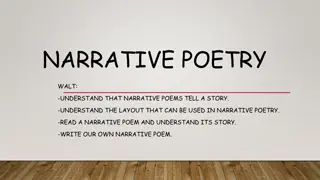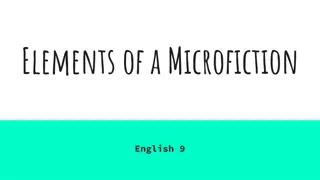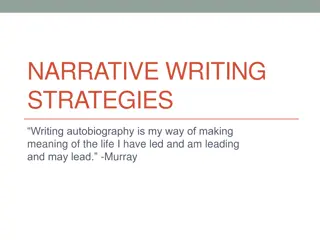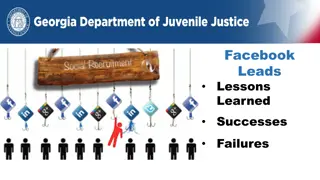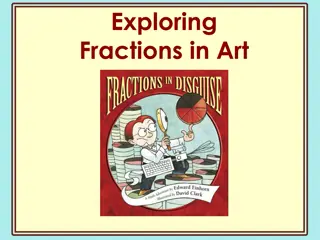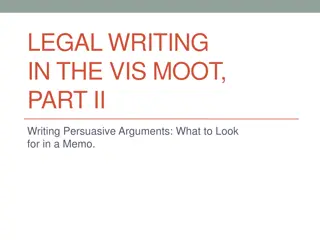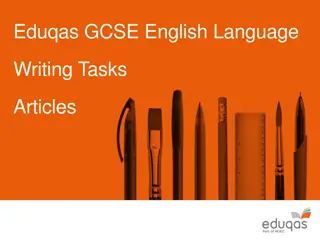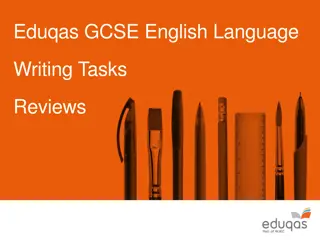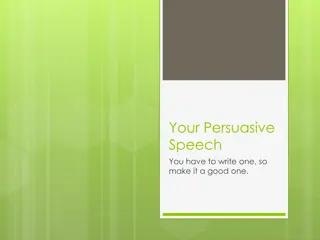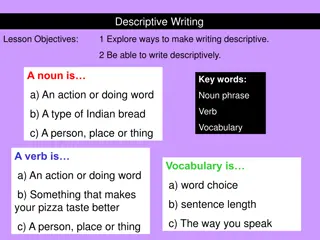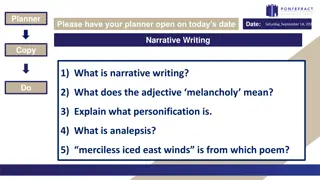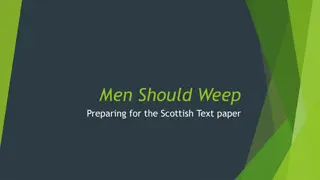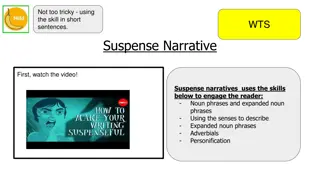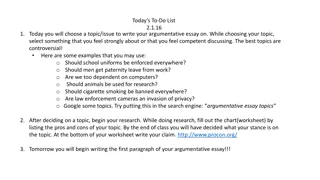Mastering the Art of Crafting Engaging Narrative Leads
Establishing a captivating lead is essential in drawing readers into your personal narratives. Learn about different lead types such as questions, announcements, opinions, quotations, and personal experiences, each designed to hook the reader's attention from the start.
Download Presentation

Please find below an Image/Link to download the presentation.
The content on the website is provided AS IS for your information and personal use only. It may not be sold, licensed, or shared on other websites without obtaining consent from the author. Download presentation by click this link. If you encounter any issues during the download, it is possible that the publisher has removed the file from their server.
E N D
Presentation Transcript
The Narrative Lead (Also known as The Hook and The Attention Grabber)
A Personal Narrative without a hook/attention grabber/interesting lead is like a chocolate chip cookie without the chocolate chips!
The lead or hook (beginning or introduction) establishes the direction your writing will take. A good lead grabs the reader s attention and refuses to let go. In other words, it hooks the reader. Below are some ideas on how to write an interesting lead. Experiment with the different types and choose the one that works best for you.
Question Many high school teachers will not allow you to use this lead type because it is overused and often misused. The key is to ask an interesting question that relates to the main idea and sparks the reader s curiosity. Example: Have you ever wondered how you would survive if you found yourself alone in the wilderness? How would you defend yourself against predators? What would you eat? Where would you find water?
Announcement Open with an announcement about what is to come. However, do not insult the reader by saying something like, I am going to tell you about Example: The day my sister threw up on the sailor s hat was a day that I ll always remember.
Opinion Open with your opinion about the topic. (No need to say, In my opinion we know it s your opinion.) Example: No one should have to share a room with a little brother. Most little kids are pains in the neck, and they never listen.
Quotation Open with a quotation from a character from the story or someone you know personally. Example: When I was a child, my mom often said, Leave it to Leslie. Oh, it wasn t anything mean or evil.
Personal Experience Open with something that has happened to you, or a personal experience. It could be a part of the story, or it could be something that is not a part of what you are writing about but still relates to the topic. Example: I never cried when my grandmother died. I hadn t been allowed to attend the funeral; my mother thought I was too young. I guess that is why I felt so sad the morning it happened.
Figurative Language Begin with a simile, metaphor, or personification. Example: The morning was like a dream. Fog hung low to the ground, making it difficult to see the creatures clearly. But I knew they were there, off in the distance, waiting for me.
The Descriptive Lead The midsummer sun was high in a clear yellow-brown sky. The morning s filmy blue clouds had dissipated, and the temperature was 8 degrees Fahrenheit.
The Imagine Lead Imagine this, you are sitting at home watching a rerun of Friends when you are interrupted by a loud rapping at the door. You struggle to your feet, open the door, and are greeted by two police officers.
Note: the following lead types are all written on the topic of a security blanket.
The Dramatic/Mysterious Lead Example: I wouldn t make it through the night without it.
Starting in the Middle of a Scene Example: I was sure we d find the blanket ripped and dirty.
Leisurely Lead Example: When I looked into my Grandma s linen closet, I was amazed by the patchwork of color. Never had I seen so many different blankets. There were soft, fluffy chenille ones and old worn brown ones. Some were still in their clear plastic wrap, while others seemed to sag off the edge of the shelf. Tucked in the middle, barely visible, with just a faded yellow corner sticking out, was the one I wanted.
Beginning at the Ending Example: I joyfully pulled the tattered corners around me and sighed as I settled into the corner of the chair.
Introducing the Narrator Example: I used to think I was different from everyone else that I had a secret friend that no one else had. But as I ve grown older and shared childhood memories with new friends, I ve come to realize that lots of people had special relationships with inanimate objects. You know, that special bear, t-shirt, pillow, or, in my case, blanket? Yes, I admit it. I had a blankie.
The Misleading Lead Example: Only insecure, immature babies need to drag their blankets around with them!
